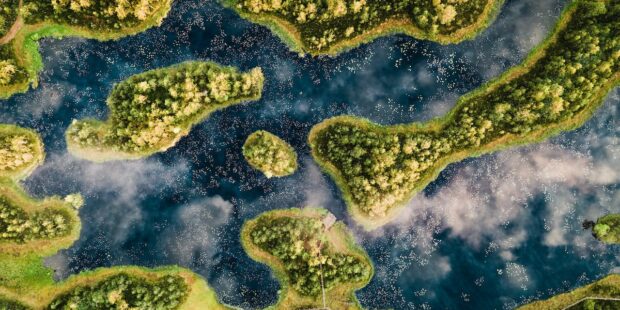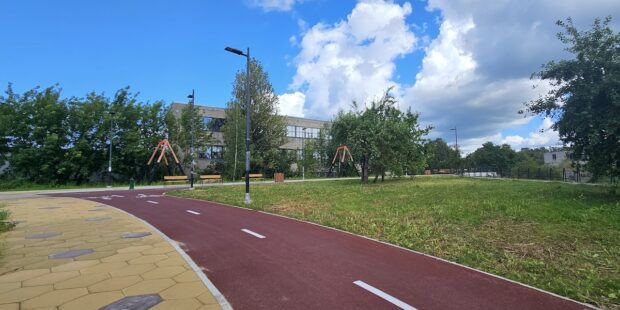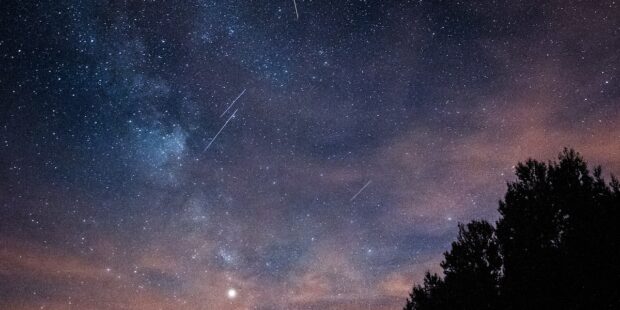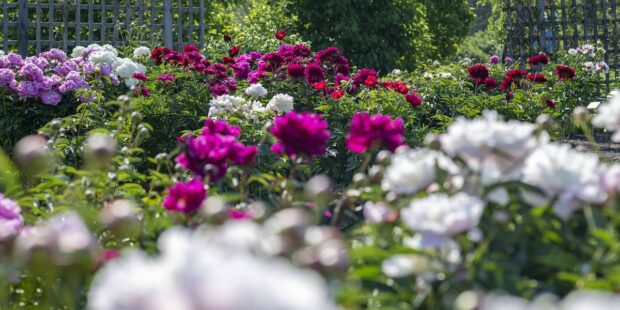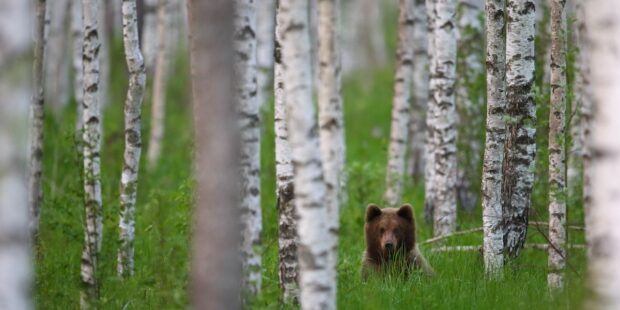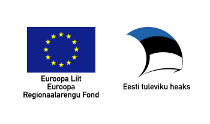Lighthouses Inviting You for a Summer Visit
Text Mikko Virta Photos Ken Oja, Mikko Virta
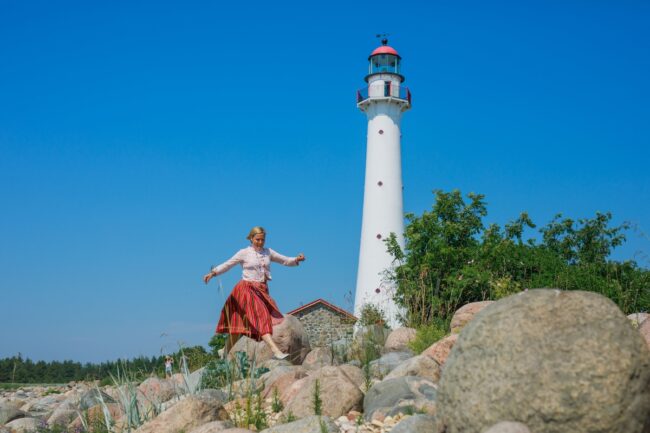 The Kihnu lighthouse (puak) stands tall at the island’s southern tip, guiding sailors for 160 years.
The Kihnu lighthouse (puak) stands tall at the island’s southern tip, guiding sailors for 160 years.
Kõpu Lighthouse—The Oldest at the Baltic Sea
The first steps are brutal. You have to lift your knees high to reach the next step. When I look up, a wave of doubt hits me. The stairs rise so steeply toward the top. The stairwell is narrow—understandable, since it wasn’t built for tourists. After a few sweaty minutes, the climb is rewarded at the top. Once through the door onto the platform, an expansive world opens up—or rather, the island of Hiiumaa below. The sea sparkles in three directions.
It’s amusing to watch buzzards soaring above the forest—down below. People sitting on benches at the base of the lighthouse look tiny. The silence is striking. Only the wind and the trees make noise. Up here, it feels almost sacred. And no wonder—the Kõpu Lighthouse is special. It’s the oldest of its kind in the entire Baltic Sea area. A guiding light was used on this spot centuries ago—originally just a beacon fire.


The lighthouse was built to serve the bustling maritime traffic of the Hanseatic League. A major trade route passed near Hiiumaa between East and West. The lighthouse’s origins are traced back to 1531, though it officially became a lighthouse in 1649 when wood fires were lit at the top.
Built on the island’s highest hill, the light shines over 102 meters above sea level—the highest of any lighthouse around the Baltic Sea. Today, the Kõpu Lighthouse is a symbol of Hiiumaa, and one of the oldest functioning lighthouses in the world. No wonder visitors come from afar. Even now, people gather at its base and the nearby café. But then it’s time to descend. The stairs back down are just as steep as the way up—only this time, your knees are trembling even more. Yet for this kind of experience, it’s worth it.

Narva-Jõesuu Lighthouse—The Easternmost in Estonia
The lighthouse is impressive, but its true uniqueness is revealed at the top. The view is extraordinary. In one direction, you see Narva–Jõesuu’s nearly 10-kilometer long sandy beach, glowing pale against the blue Gulf of Finland. A dark green pine forest frames the beach, with a few tall buildings scattered within. On the other side flows the fast Narva River, and across it begins Russia.
The feeling is both magical and surreal. Here you are, atop a lighthouse, a stone’s throw from a major neighbouring country. This is where the EU ends—or as Narva’s slogan says, this is where Europe begins. At the top, it’s peaceful and calm. Hikers can be spotted on the dunes, boats move along the river, and a black redstart sings somewhere. Nearby, a new cultural district is under construction, replacing the buildings of an old fishing collective. The area will soon have a promenade, playgrounds, and sports facilities.
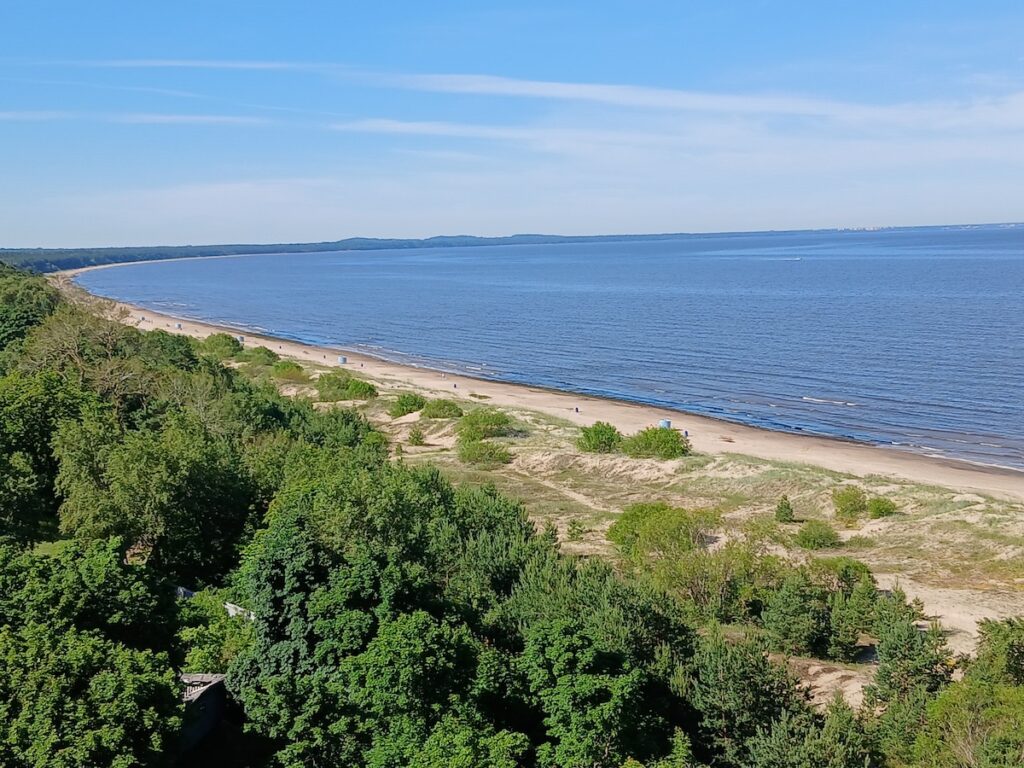
The Narva-Jõesuu Lighthouse was built in 1957, and stands at 30 meters tall. There had been a lighthouse here in the 19th century, but it was destroyed in World War II. This current lighthouse only opened to the public last summer. After visiting the top, I walk across the dunes to the beach. From there, the red-and-white-striped lighthouse peeks beautifully through the trees. Lighthouses should always be admired from multiple angles.
Kihnu Lighthouse – The Beauty of the Gulf of Riga
Everything is different on Kihnu. That’s mostly thanks to the island’s unique people—or more specifically, its women. For generations, the women have managed everything on land, while the men fished or hunted seals at sea.
So it’s no surprise that the local women care for the Kihnu Lighthouse. At its base is a handicraft shop, and tickets are sold by a young woman in a red-striped national skirt. The beautiful lighthouse rises ahead, approached via a small path winding through junipers. It towers proudly above the landscape. Locals call it puak, in the Kihnu dialect.
Climbing to the top is a pleasure—the interior is just as beautiful. The spiral staircase feels like a work of art, full of colour and detail. At the summit, the view opens over the Gulf of Riga. The summer sea glistens in the sun, with terns and gulls adding to the soundscape. Cormorants, called kormonauts in the Kihnu dialect, paddle across the surface.
On the other side, only forest is visible. Kihnu, about seven kilometers long, is dominated by pine woods, groves, and coastal junipers. The Kihnu Lighthouse has a long and interesting history. Its light first shone in 1865, aiding ships from Pärnu and Riga navigating the dangerous shallows nearby.
Its cast-iron parts were ordered from the British company Porter & Co, which also supplied parts for the lighthouses on Virtsu and Vormsi islands. The Virtsu and Kihnu lighthouses were identical, except for colour. The Virtsu lighthouse was destroyed in 1917.
The lighthouse is deeply meaningful to the people of Kihnu. Its 160th anniversary was celebrated thoroughly with singing, dancing—and birthday cake. Back on the ground, I walk to the tip of the cape. From there, the white tower looks very different from the sandy road. Blooming rosebushes, the blue sea, and the white lighthouse look like a painting. A woman in a beautiful red-striped national skirt walks along the shore, completing the picture.
While visiting the lighthouse, it’s also worth stopping by the Kihnu Museum, church, and small village shops. The best way to get around the island is by bicycle. And if it’s the weekend and a village festival is coming up—better stay overnight.
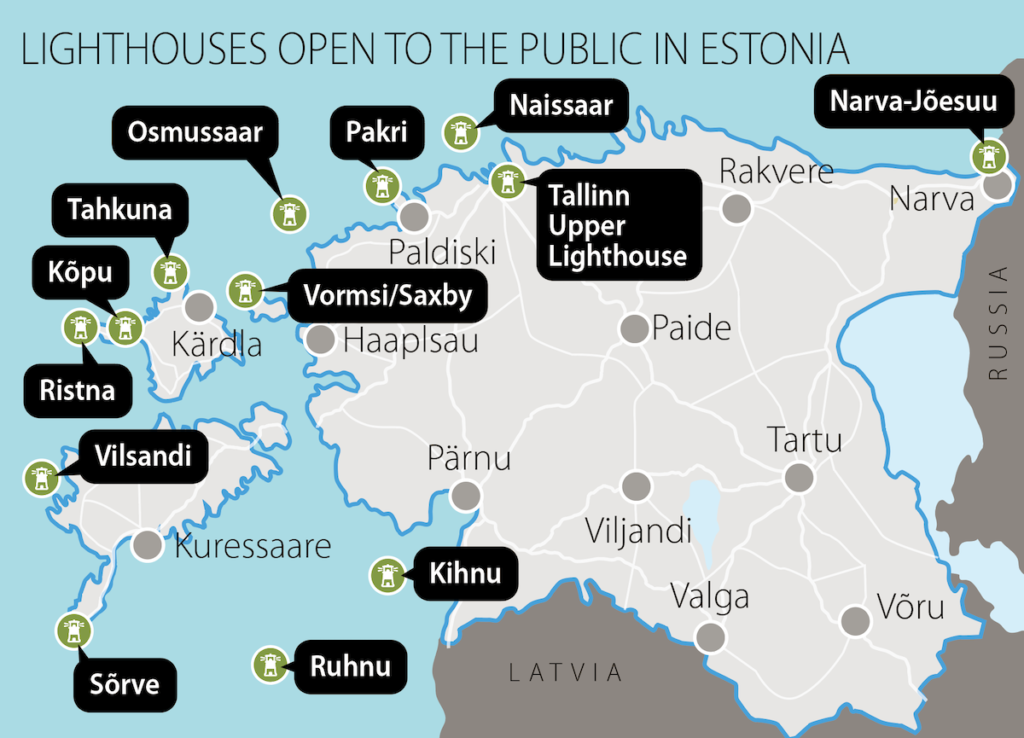
Lighthouses Open to the Public in Estonia
Estonia is a dream destination for lighthouse lovers. There are 13 lighthouses open to visitors. Hiiumaa has the most—Kõpu, Ristna, and Tahkuna—and all three can be visited with a single ticket.
In July 2025, the Upper Lighthouse in Tallinn, located in Lasnamäe, will also open to the public.
Six Estonian lighthouses are among the 100 most historically significant lighthouses in the world. A small entrance fee is usually required. More info: www.etts.ee
- Kihnu (1865, 28 m)
- Pakri (1889, 52.3 m)
- Kõpu (1531, 36 m)
- Tahkuna (1875, 43 m)
- Ristna (1874, 29.5 m)
- Sõrve (1960, 52 m)
- Vormsi/Saxby (1864, 24 m)
- Osmussaar (1954, 35 m)
- Naissaar (1960, 45 m)
- Ruhnu (1877, 38 m)
- Vilsandi (1809, 39 m)
- Tallinn Upper Lighthouse (1896, 40 m)
- Narva–Jõesuu (1957, 30 m)
To learn more about this and similar topicsEstonian Lighthouses Kõpu lighthouse lighthouses in Estonia Narva-Jõesuu lighthouse Nature nature trip Travel



